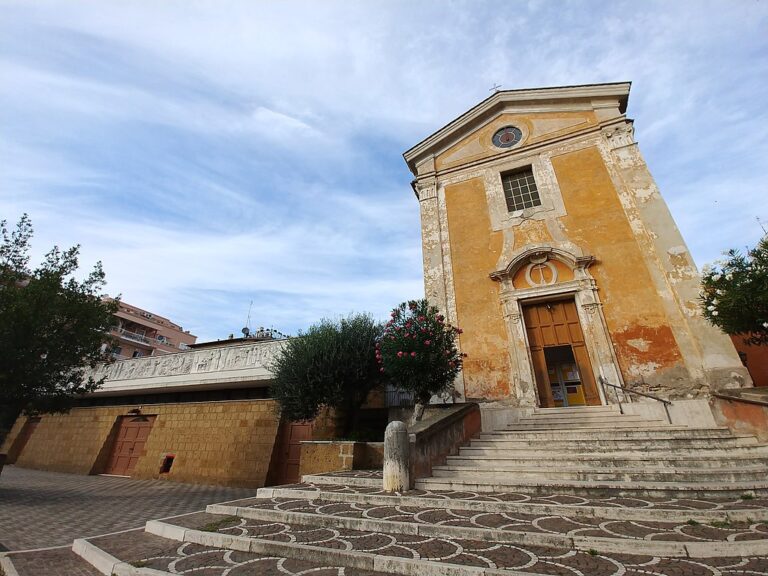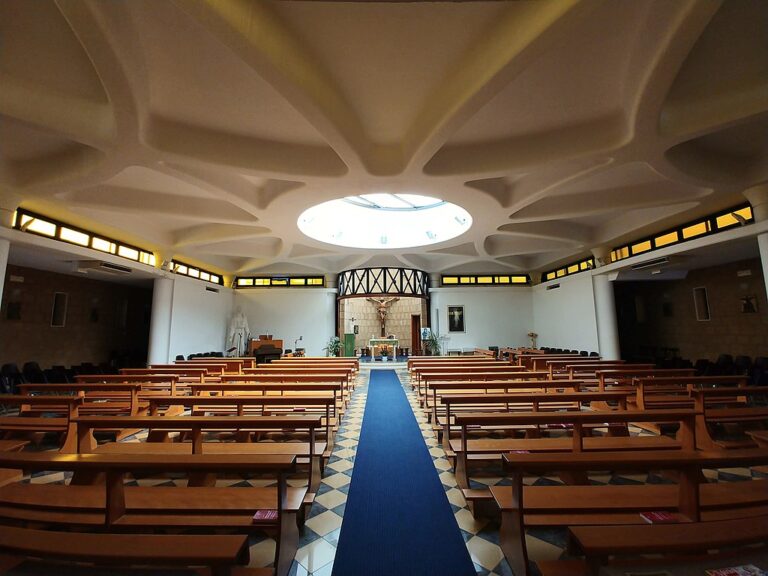Church of San Francesco d'Assisi (Monte Mario)
Father Ernesto balducci's places
BIOGRAPHY
THE ROMAN EXILE
On May 20, 1959, General Vincenzo Tomek informed him that the Holy Office had imposed his removal from Tuscany, and in a letter dated the following July 1, he appointed him "visitatore generale delle Scuole pie" ("general visitor of the Pious Schools"). Therefore, Balducci moved to Rome in October. Until 1962, his seat was Frascati (where he taught religion in an institute of nuns) while later he settled in Monte Mario, in the parish of San Francesco, teaching Church history at the Calasanctianum. By an unforeseeable coincidence that he liked to call the "irony of Providence”, that move actually allowed him to follow closely the events associated with the pontificate of Pope Giovanni XXIII and the work of the Council. The Council, experienced in Rome, gave Balducci the opportunity to weave a series of relationships with theologians and bishops from around the world and became a unique opportunity to broaden his theological, ecclesiological and exegetical horizons.
THE GOZZINI CASE
During his permamency in Rome during the Council years, between 1963 and 1964, he was at the center of the public scene for the positions he took on conscientious objection. In an interview published on January 13, 1963 in Il Giornale del Mattino, he had argued - criticizing the sentencing of Giuseppe Gozzini for refusing to wear the military uniform in coherence with his faith, he was the first Catholic objector in Italy - that it was necessary to rethink the concept of homeland and that in some cases one had a duty to disobey. He was thus reported to the Public Prosecutor's Office, and at the same time a complaint was filed with the provincial of the Scolopians and an accusation with the Holy Office. A trial was opened against him that ended, after an acquittal in the first instance, with a final conviction by the Supreme Court in June 1964. The ruling, which went into religious grounds by imputing a defect in orthodoxy to the Scolopian, aroused protests and expressions of solidarity with him. There was no criticism of his positions from the pontiff.
"TESTIMONIANZE"
In 1958 he founded the magazine "Testimonianze" with a group of friends and young people linked to the Cenacolo such as, in addition to Gozzini and Meucci, Vittorio Citterich, Mario Camagni, Federico Setti, Danilo Zolo and Lodovico Grassi, who is its current co-director. Balducci expressed some of the needs for social openness and dialogue present in the Catholic world, especially among young people, while remaining internal to those circles and sharing some of their apologetic perspectives inherent in the project of a Maritainian "new Christianity,
", (see among others, Christianity and Christianity, Morcelliana, Brescia 1963). One of the first subscription cards sent to the magazine was that of the then Archbishop of Milano Giovan Battista Montini. If, despite the exile and the scandals of '64, the rifts with the Church did not become dramatic, this was due precisely to the relationship of esteem with the latter, which remained practically unchanged throughout the pontificate and constituted an undoubted element of protection.
QUOTE
E. Balducci
"The life of faith is a creative life, because our conscience is not a mere organ of executing received orders." [Source Peacelink]
MUST-SEE
CHURCH OF SAN FRANCESCO
Originally also known by the name Sant'Onofrio in Campagna al Borgo Clementino, the church was built to a design by Pietro Passalacqua between 1667 and 1676, thanks to a bequest from Bartolomeo Neri, prothonotary apostolic and canon of the church of Santi Celso and Giuliano. It took the place of a country chapel previously built by Neri in 1660. It was not consecrated until July 2, 1728, by Pope Benedetto XIII. Initially entrusted to the Gerolamini, following the suppression of the order it was later given to the Scolopians. In 2003 a new church was built next to the old one, designed by Anna Claudia Cenciarini, for festive celebrations; in modern style, it develops in width rather than height and is characterized externally by a tufa wall face with a marble bas-relief with Scenes from the Life of San Francesco on the frontage, internally by a single quadrangular room lit by a central circular skylight, with a semicircular apse housing the presbytery.
GALLERY

Church of San Francesco d'Assisi
Monte Mario (Rome)

Interior of the new Church of San Francesco
Monte Mario (Rome)

